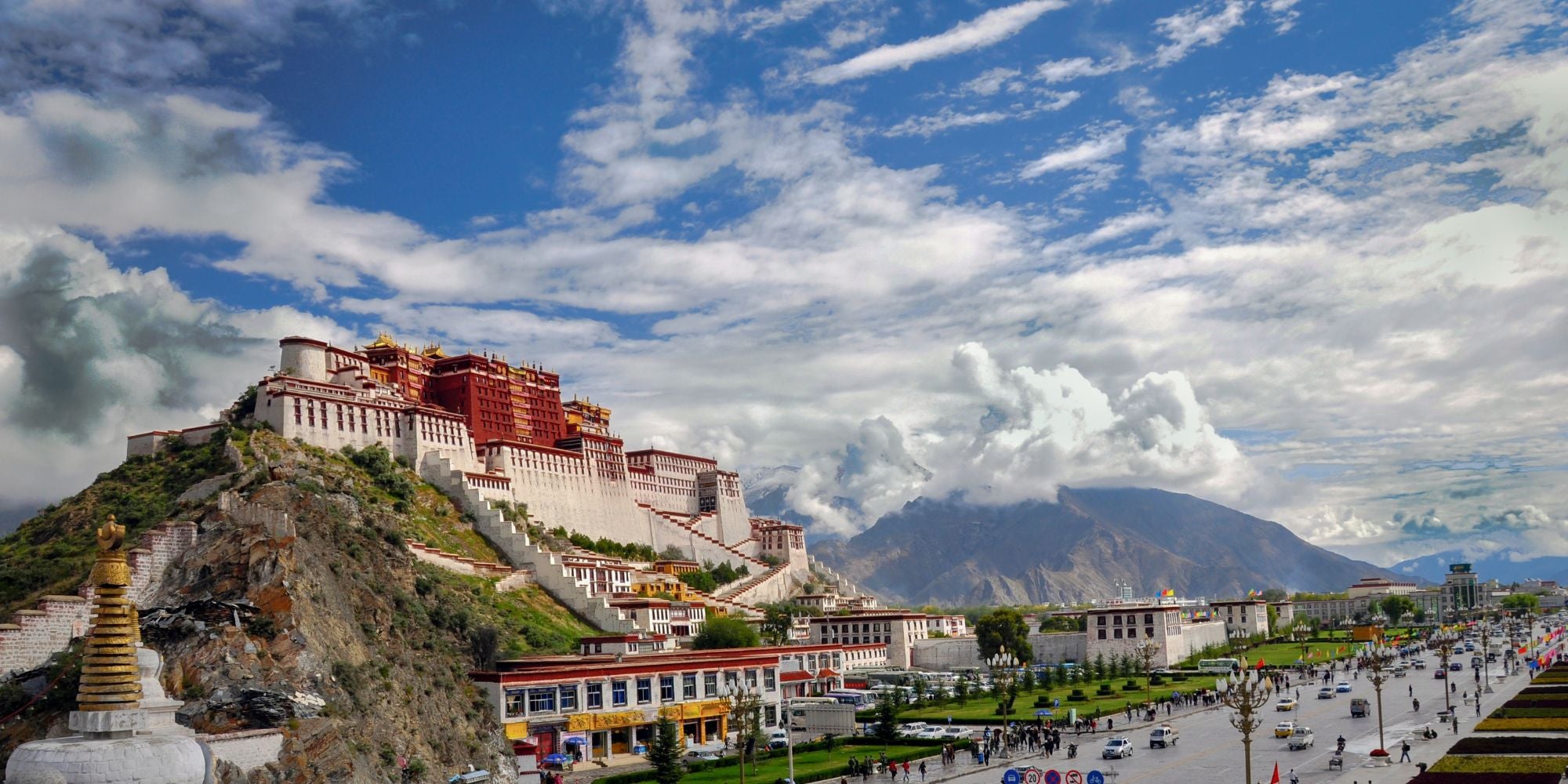
Are you planning a trip to Lhasa Tibet, altitude sickness is commonly a huge concern. As one of the highest cities in the world, our guide will teach you everything you need to know about Lhasa altitude and seven ways to avoid Lhasa altitude sickness.
Lhasa altitude sits at 11,995 feet above sea level. As not only the highest city in Tibet, Lhasa is considered one of the highest cities in the world.
Located in Tibet in the southwester region of China, Lhas is the capital city and home to ancient Buddhist temples and stunning natural landscapes. Lhasa meaning is the "land of the gods", and is surrounded by the Himalayan Mountains. Due to its rich history and proximity to many Tibetan mountains including Mt Everest and, Lhasa is a popular destination for mountaineers, climbers, and vacationers.
Lhasa isn't alone in height, Tibet altitude averages around 14,000 feet and is home to some of highest mountains in the world.
At 11,995 feet above sea level, you should be well prepared for Lhasa's high altitudes.
Yes, considering its population, Lhasa is one of the highest cities in the world.
While there's some towns higher, not many populated cities get close to Lhasa's height. La Paz in Bolivia has one of the closest elevations at 11,942 feet.
Yes, Mountain medicine recognizes Tibet as very high altitude.⁸
On the Tibetan Plateau, Tibet is considered the highest region in the world with an average elevation of 14,000 feet.
Mount Everest is the highest altitude in Tibet at 29,031 feet above sea level.
In addition to Mt Everest, many mountain ranges and peaks in Tibet exceed 20,000 feet high — including Himalaya Mountains, Kunlun Mountains, Karakoram Range-Tanggula Mountains, Nyenchen Tanglha Mountains, Namcha Barwa, Makalu, Lhotse, Cho Oyu, Namcha Barwa, and Shishapangma.
Yes, you can get altitude sickness in Lhasa.
With approximately only 13% oxygen in the air, the risk of altitude sickness in Lhasa is very high. It's estimated that up to 50% of people sleeping at an altitude over 10,000 feet will experience altitude sickness. At Lhasa, this number of cases could be even higher.
For perspective, altitude sickness in our state of Colorado can be bad, and most of the destinations don't come close to the height of Lhasa.
You should be well prepared for altitude sickness if traveling to Lhasa, and symptoms could be more on the severe side.
Lhasa altitude sickness (or Tibet altitude sickness) is caused by the lower oxygen levels in the air and body's inability to adapt.
High altitudes are proven to cause oxidative stress on the body, and increased respiration leading to fluid loss (or dehydration). This can lead to a range of symptoms including headache, extreme fatigue, and shortness or breath.
Symptoms of Lhasa Altitude Sickness may include:
Be aware of these potential altitude sickness symptoms in Lhasa, which can develop within 6-24 hours upon arrival.
With the natural beauty of Lhasa, it comes with a really high risk of altitude sickness for travelers.
As a company with years of high-altitude experience being based in Colorado, we'll share with you our top researched ways to avoid altitude sickness and be best prepared.
Here's 7 Ways To Avoid Lhasa Altitude Sickness:
To summarize, follow these tops ways to avoid Lhasa altitude sickness to make your trip more enjoyable — including getting plenty of hydration, acclimating slowing, drinking yak tea, maximizing sleep, limiting alcohol, avoiding strenuous activity, and taking glutathione.

Highly effective and easy to use, Zaca chewables are a fast way to rehydrate and recover. Unlike other supplements, these chewables are loaded with a blend of antioxidants including glutathione to fuel your body for mountain trips. Perfect for adventurers, travelers, athletes, and anyone who loves to explore the great outdoors. Simply take 2-4 chewables each day of your trip or as needed. Try Zaca's chewable supplement today and feel better during your traveling adventures.
SOURCES:
1. Lhasa Elevation
https://en.wikipedia.org/wiki/Lhasa
2. Tibet Elevation
https://en.wikipedia.org/wiki/Tibet
3. Namtso Lake Elevation
https://en.wikipedia.org/wiki/Namtso
4. Mount Everest Elevation
https://en.wikipedia.org/wiki/Mount_Everest
5. Shigatse Elevation
https://en.wikipedia.org/wiki/Shigatse
6. Gyantse Elevation
https://en.wikipedia.org/wiki/Gyantse
7. Tibet Altitude: Lhasa, Highest, And Lowest Elevations
https://www.wondersoftibet.com/about-tibet/altitude/
8. Effects of high altitude on humans
https://en.wikipedia.org/wiki/Effects_of_high_altitude_on_humans
9. Oxygen Levels at Altitude
https://wildsafe.org/resources/ask-the-experts/altitude-safety-101/oxygen-levels/
10. High-altitude illness (including mountain sickness) (Beyond the Basics)
https://www.uptodate.com/contents/high-altitude-illness-including-mountain-sickness-beyond-the-basics
11. Why Do You Need to Drink a Lot of Water at a High Altitude?
https://www.livestrong.com/article/360485-how-to-train-for-high-altitude-hiking
12. Tibetan Butter Tea: Get to Know the Most Favored & Essential Drink in Tibet - Altitude Sickness Too
https://www.tibettravel.org/tibetan-food/tibetan-butter-tea.html
13. Sleep: The Secret Ingredient of Injury Recovery
https://www.orthocarolina.com/media/sleep-the-secret-ingredient-of-injury-recovery
14. Effects of Alcohol
https://www.ahajournals.org/doi/full/10.1161/01.HYP.29.6.1278#
15. High altitude and oxidative stress
https://pubmed.ncbi.nlm.nih.gov/17482529/
16. Oxidative Stress and Diseases Associated with High-Altitude Exposure
https://www.ncbi.nlm.nih.gov/pmc/articles/PMC8868315/
17. Effect of high altitude (7,620 m) exposure on glutathione
https://pubmed.ncbi.nlm.nih.gov/11320641/